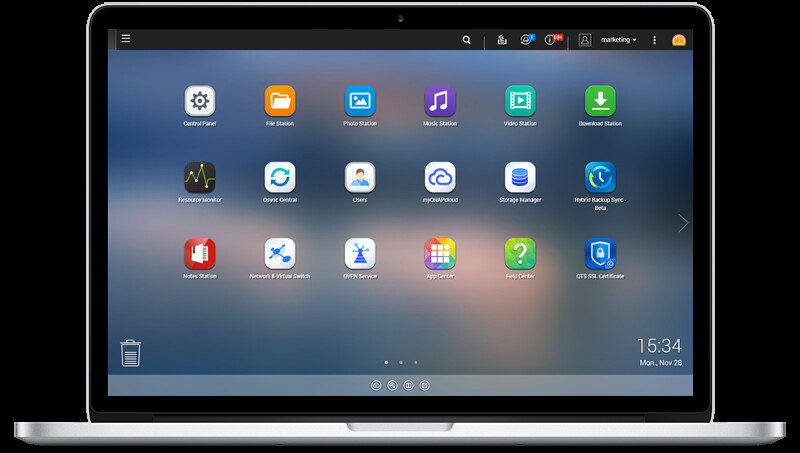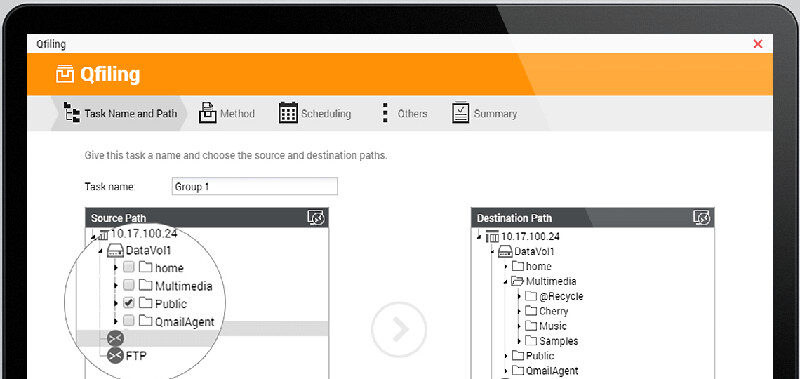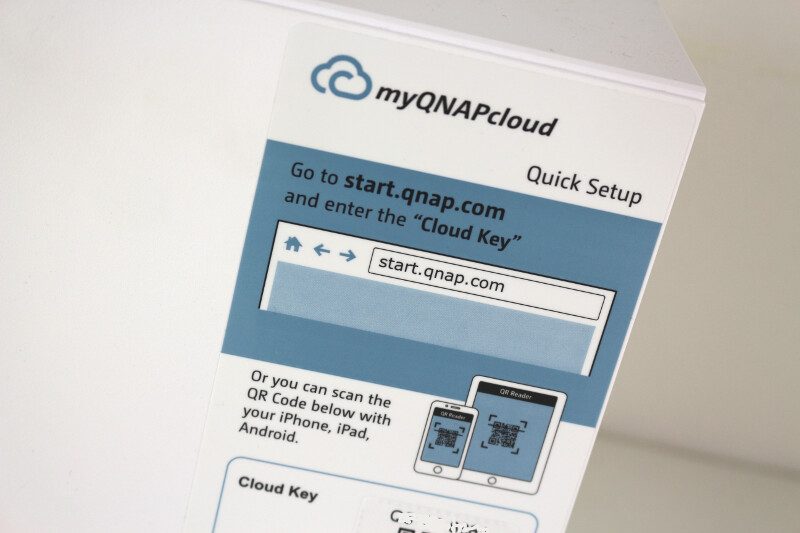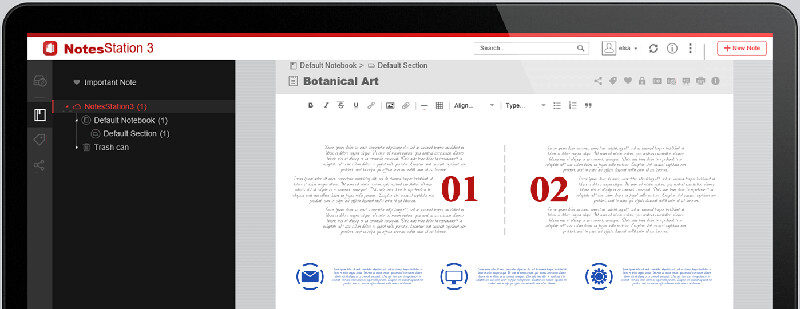Affordable QNAP TS-231P 2-Bay SOHO NAS Review
Bohs Hansen / 7 years ago
Operating System: QTS 4.3.3
This is the first QNAP NAS with QTS 4.3.3 in my office and it is quite the pleasure to use. The interface got a major overhaul since we last had a view of it and it’s packed with more features than ever before.
A Streamlined Experience with QTS 4.3.3
The revamped control panel is one of the first things you’ll notice. It now contains more information and it is better organised, yet it retains most of the old structure. That kind of setup will make it easy for users familiar with previous versions to use it while offering the latest functionality.
Alerts and notifications can be sent more ways than ever before. Warnings, errors, and update notifications can be received through browser pop-ups, emails, and SMS. You can also log into QTS and view all the details. Last but not least, it features voice alerts for power, cooling, and storage errors. The resource monitor also got a huge overhaul.
It is also a faster system now and that is thanks to the 64-bit architecture. With it, QTS handles computing, data transfer, transcoding, applications and other tasks with higher efficiency.

File Management
The main purpose of a NAS is to store all your files. But storing them isn’t enough, you also need a proper way to access them. QTS has a whole list of features built-in for this. There is the basic cross-platform file sharing for Windows, Mac OS, and Linux systems as well as remote file access through FTP and SFTP.
There is the basic file manager too, which lets you organise the files directly on the unit, but it gets better. The Qfiling app can automate file organisations for you. It does so with pre-defined rules you set and on a schedule that you configure. Best of all, it isn’t limited to the NAS itself, it also works across external storage devices and remote NAS units.

Create Your Personal Cloud Experience
Having your files at home is nice for many reasons, but mainly because it keeps you in control. But you might still want to access the files while you’re on the go, and that’s no problem either. QNAP built their system with plenty of options in this regard. First of all, every QNAP NAS comes with a Cloud Key right on the unit. This can be used to set everything up and also to identify the unit.
When you want to connect to your NAS remotely, it needs an address. This could be your IP address, but very few have a static address these days and it’s also bad to memorise. A name is easier to remember and that’s where DDNS services come into play. There are various providers on the market for this kind of service, but you don’t need to worry about them. QNAP has their own myQNAPcloud DDNS service which is free to use for all QNAP owners. With it, you get an easy-to-remember name with which you can connect remotely.
Connecting is one thing, but you probably also want to use your personal cloud for backups. For this, there is the Qsync app which is available for most systems. It includes fast file synchronisation through packing and auto-recovery in the case of file corruption.

Business Features
Most of the business-oriented features are for enterprise-level devices, but that doesn’t mean that we can’t take a brief gander at them. QTS comes with a lot of Virtual System functions such as the Container Station, dual OS NAS devices, Linux Station, IoT development tools, and a Virtual Switch. All this in combination allows you to utilise all the NAS hardware in a whole new way. That is if your QNAP NAS has the requirements to run it. So check up on that before you decide which model you want.
Productivity
This one of the sections that I really like as these apps are some of those which can make your day easier, starting with the Notes Station 3.0. The Notes Station is a universal notepad running on your NAS. You can connect through your browser or use the Qnotes Android/iOS app. That in itself is basic, but it also allows you to share it and let collaborate with other people. Notes can easily be protected with passwords and encryption while multiple versions are stored through snapshots. Make an error? Just roll it back.
QmailAgent is an online email agent for managing multiple email accounts from a single interface. You can read and write emails via QmailAgent, and centrally save attachments to the NAS. Share links also make it easy to share large files even if they exceed attachment size limits. There’s also the Qcontactz app. And yes, you guessed it, it’s a management function for your contacts. With CSV and vCard 3.0 support, it makes the management of a huge number of contacts easy. It’s also integrated with QmailAgent and third-party applications.

Multimedia Features
I’d say most home users utilise their NAS for multimedia and QNAP’s QTS 4.3.3 is better than ever in this regard. A feature owners will love is the multi-zone control. The function is best explained with QNAP’s own words: “Multi-zone control allows you to stream media to every device connected to the NAS, and to control every device connected via Video Station, Music Station and Photo Station. Have fun building a personal broadcasting station or home movie theater.”
And that brings us to the three main multimedia apps, Video Station 5.0, Photo Station 5.0, and Music Station 5.0. Their names give away their functionality and they all have a iOS/Android companion app. Store, manage, and play your entire media collection with ease. May it be downloads, disk rips, TV recordings, holiday memories, or anything else.
QTS now also supports MTP for direct mobile device connections. Now you can connect your mobile phone via the USB port directly to backup, manage, and share your mobile media files in File Station.
The Download Station could also be considered a multimedia feature as it is used in collaboration with those apps. It is a 24/7 download centre for torrents, HTTP, FTP, and newsgroups. It comes with all the features you’ll expect such as speed limiting, search functions, prioritising, and more.

Do you want to know more?
If you still want to know more, then there is a 92 page PDF file available. This official QTS 4.3.3 OS document has every details and function listed, but it will take some time to read it all. You can find it by clicking here.



















